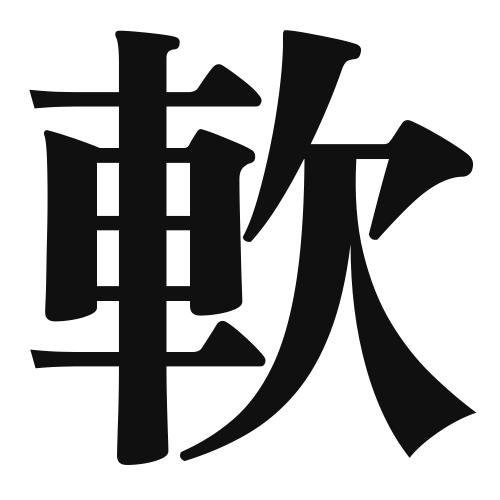1. Overview of Meaning
The kanji “軟” (nan) means “soft” or “gentle.” It is often used to describe textures, materials, or even personalities that are not hard or rigid.
2. Formation and Radical
The kanji “軟” is a phonetic compound (形声文字) that combines the radical for “vehicle” (車) on the left, indicating something related to movement or transport, with the phonetic component “nan” (the right side). This combination suggests a concept of softness in relation to vehicles or movement.
The radical for “軟” is 車, which means “car” or “vehicle.”
3. Examples of Usage
Common words and phrases that include “軟” are:
- 軟体動物 (なんたいどうぶつ, nantai dōbutsu) – “soft-bodied animals” (like jellyfish)
- 軟らかい (やわらかい, yawarakai) – “soft” (adjective)
Example sentence in daily conversation:
このクッションはとても軟らかいです。
(Kono kusshon wa totemo yawarakai desu.)
This cushion is very soft.
4. Synonyms and Antonyms
Similar kanji with related meanings include:
- 柔 (じゅう, jū) – “gentle” or “flexible,” which emphasizes a gentle quality.
Antonyms include:
- 硬 (こう, kō) – “hard,” which indicates the opposite quality of being firm or solid.
5. Cultural and Historical Background
The concept of “軟” is significant in Japanese culture, where softness is often associated with gentleness and kindness. This is reflected in various proverbs and idiomatic expressions, such as:
- 柔よく剛を制す (じゅうよくごうをせいす, jū yoku gō o seisu) – “Softness can overcome hardness,” which emphasizes the strength found in gentleness.
Overall, “軟” embodies a cultural appreciation for softness and flexibility in both physical and interpersonal contexts.
